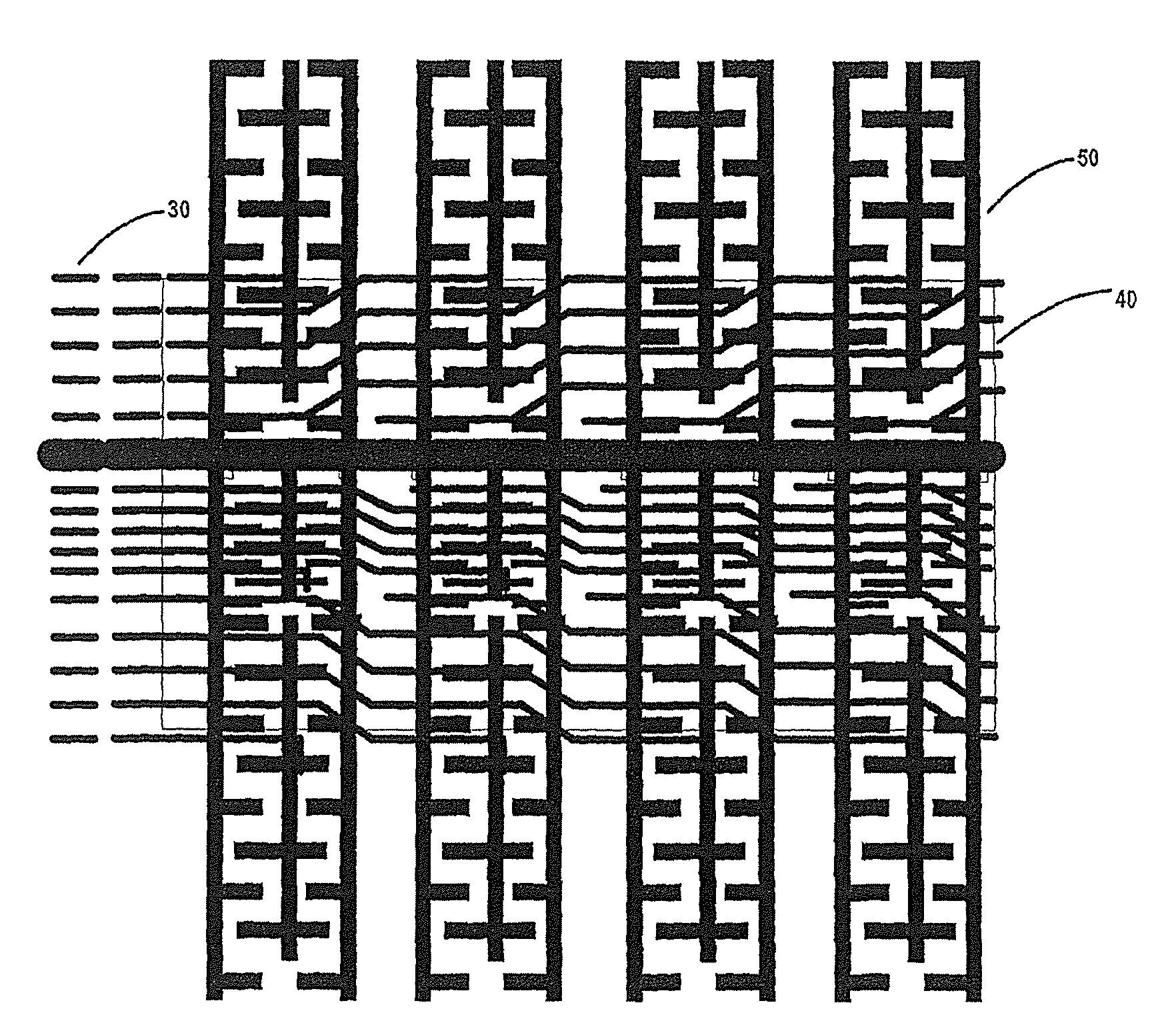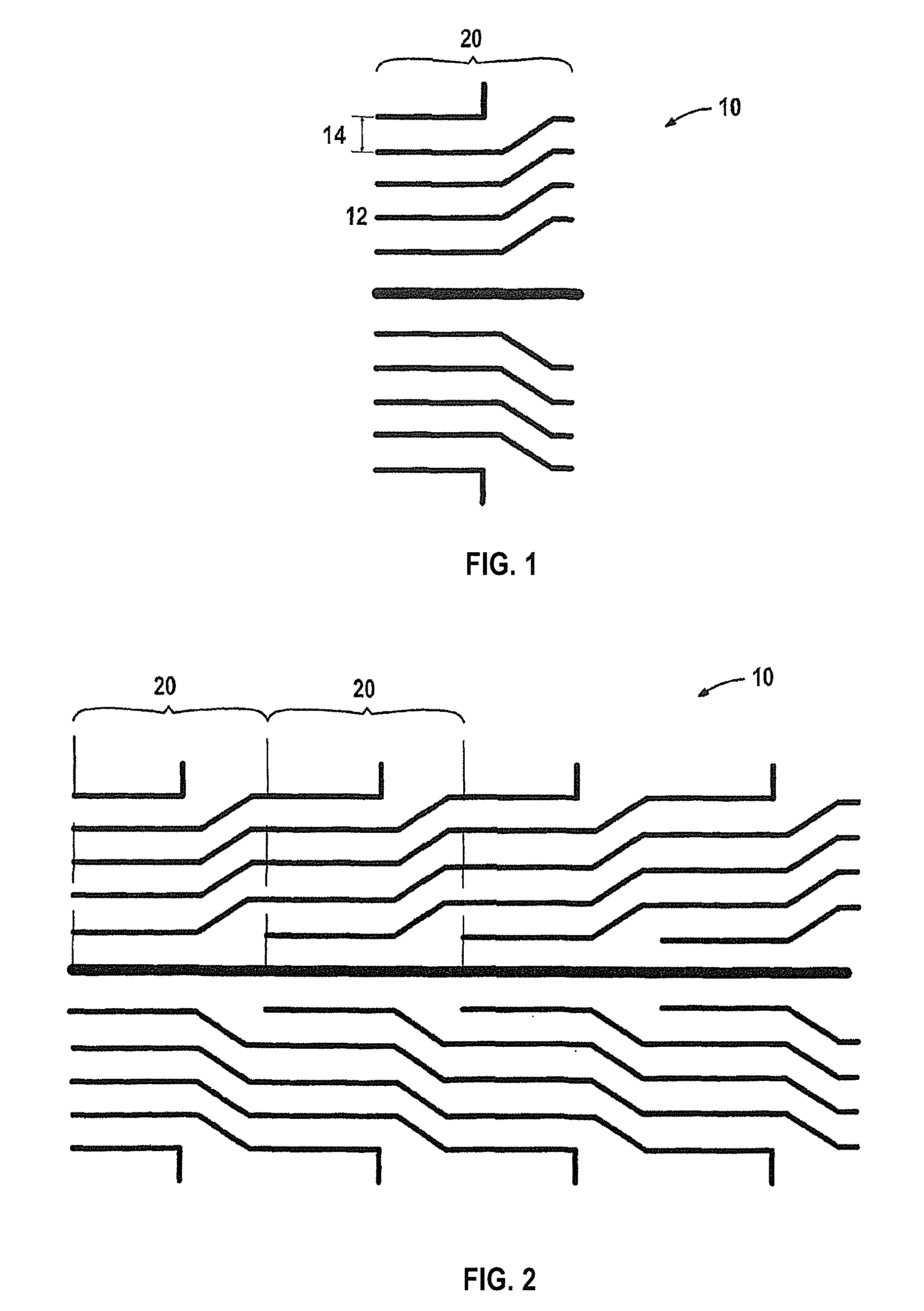Method for manufacturing long force sensors using screen printing technology
a technology of screen printing and sensors, applied in the field of manufacturing long force sensors, can solve the problems of screen printing technology tolerance errors, unacceptable increase in resistance, etc., and achieve the effects of reducing width and separation, preventing bubbling and separation of sensors, and dramatically minimizing the dead area of sensors
- Summary
- Abstract
- Description
- Claims
- Application Information
AI Technical Summary
Benefits of technology
Problems solved by technology
Method used
Image
Examples
Embodiment Construction
As illustrated in FIG. 1, each sensor 10 comprises sections 20 that are fairly short in length and thus easy to print in a repetitive manner; such a length, for example, may be 1′. Each sensor section 20 may comprise a separate analog output. Separate sensor areas permit one to distinguish between different force or pressure events (for example, a ball impact and foot step) that can happen at the same time on separate areas of one particular sensor. They also allow one to localize the location of an event to within the area of a sensor, and in case of failure of a sensor area, only one small area would be affected. This idea of splitting up a sensor into smaller sensor areas is described in U.S. Pat. No. 3,982,759 (Grant).
Because of the desired length of the long sensors 10, they can only be printed if the artwork or layout design has a repeating pattern. The following discussion and references to the Figures illustrate how this is done.
First, a series of conductive traces 12 are pr...
PUM
| Property | Measurement | Unit |
|---|---|---|
| Length | aaaaa | aaaaa |
| Force | aaaaa | aaaaa |
| Dielectric polarization enthalpy | aaaaa | aaaaa |
Abstract
Description
Claims
Application Information
 Login to View More
Login to View More - R&D
- Intellectual Property
- Life Sciences
- Materials
- Tech Scout
- Unparalleled Data Quality
- Higher Quality Content
- 60% Fewer Hallucinations
Browse by: Latest US Patents, China's latest patents, Technical Efficacy Thesaurus, Application Domain, Technology Topic, Popular Technical Reports.
© 2025 PatSnap. All rights reserved.Legal|Privacy policy|Modern Slavery Act Transparency Statement|Sitemap|About US| Contact US: help@patsnap.com



